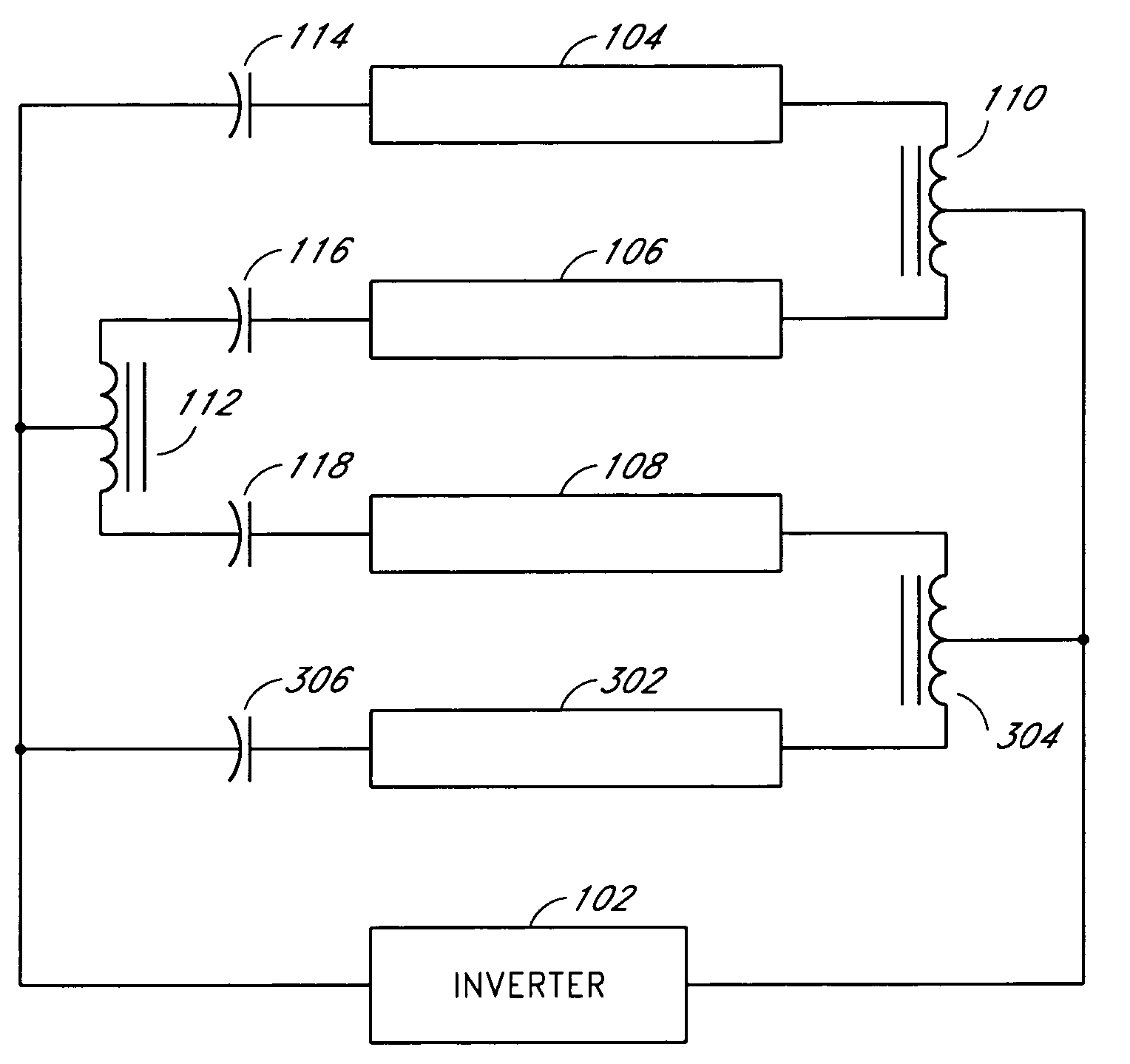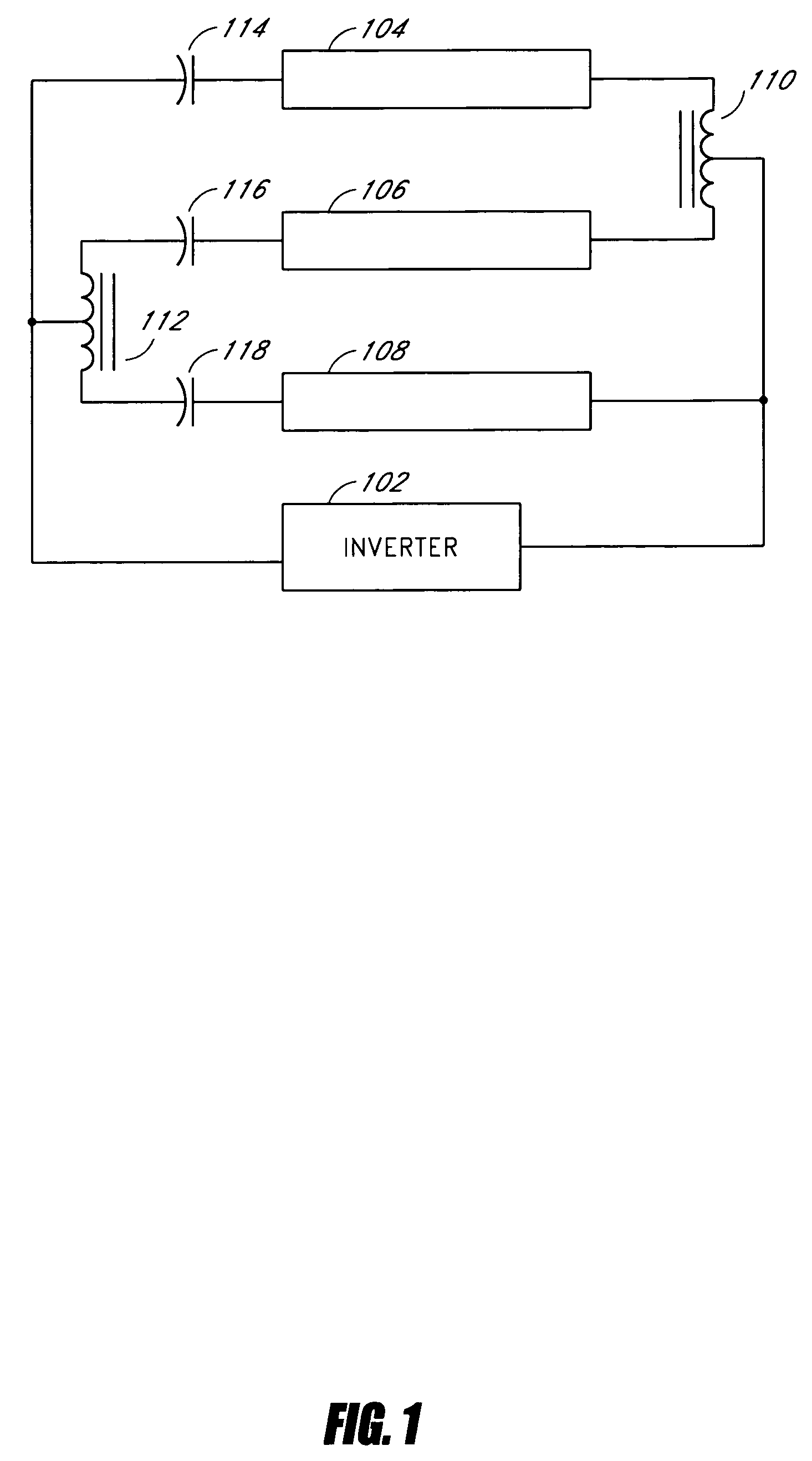Nested balancing topology for balancing current among multiple lamps
a technology of balancing current and lamps, applied in the direction of lighting devices, electrical equipment, light sources, etc., can solve the problems of increasing the operating voltage, increasing the impractical level of operating voltage, and driving multiple ccfls from a single or relatively few power inverters
- Summary
- Abstract
- Description
- Claims
- Application Information
AI Technical Summary
Benefits of technology
Problems solved by technology
Method used
Image
Examples
Embodiment Construction
[0054]Although particular embodiments are described herein, other embodiments, including embodiments that do not provide all of the benefits and features set forth herein, will be apparent to those of ordinary skill in the art.
[0055]Embodiments include balancing transformer configurations that are relatively cost-effective, reliable, and efficient. Embodiments include configurations that are applicable to any number of gas discharge tubes. The balancing transformer configuration techniques permit a relatively small number of power inverters, such as one power inverter, to power multiple lamps in parallel. Traditionally, driving multiple lamps has been difficult due to the negative impedance characteristic of such loads. The balancing techniques disclosed herein advantageously permit paralleled lamps to “start” or light up relatively quickly and maintain relatively well-balanced current during operation. Embodiments are applicable to a wide variety of negative-impedance gas discharge...
PUM
 Login to View More
Login to View More Abstract
Description
Claims
Application Information
 Login to View More
Login to View More - R&D
- Intellectual Property
- Life Sciences
- Materials
- Tech Scout
- Unparalleled Data Quality
- Higher Quality Content
- 60% Fewer Hallucinations
Browse by: Latest US Patents, China's latest patents, Technical Efficacy Thesaurus, Application Domain, Technology Topic, Popular Technical Reports.
© 2025 PatSnap. All rights reserved.Legal|Privacy policy|Modern Slavery Act Transparency Statement|Sitemap|About US| Contact US: help@patsnap.com



